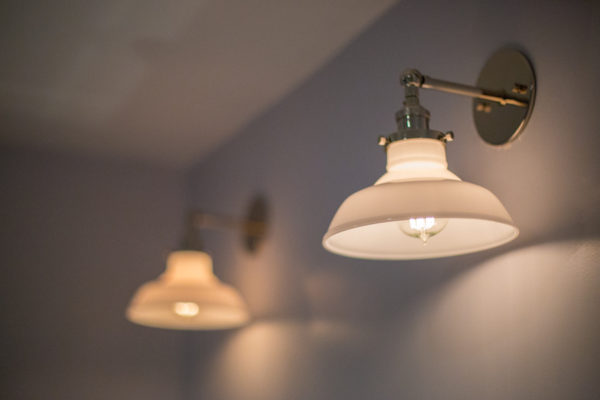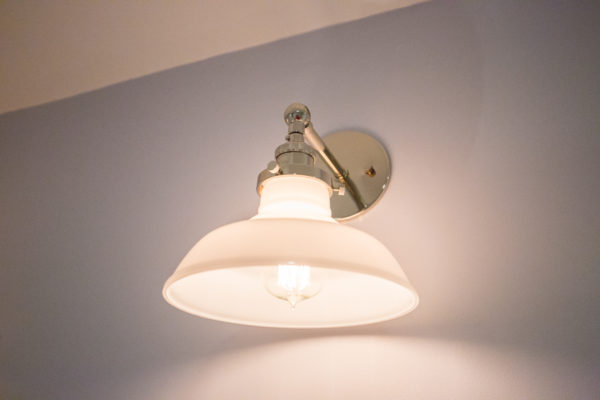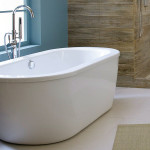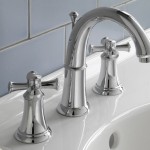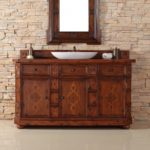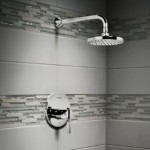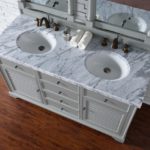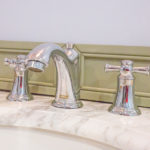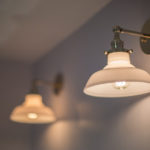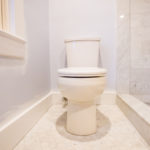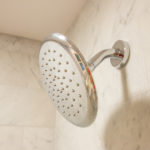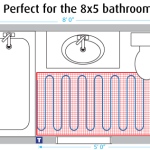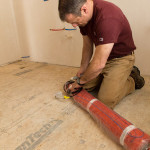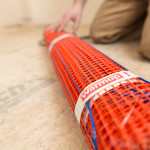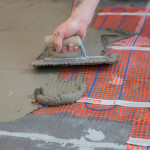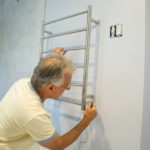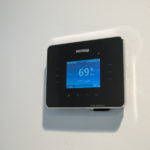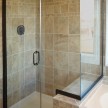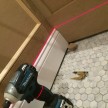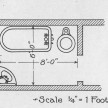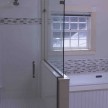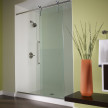Bathroom Remodeling Considerations
Planning Electrical Work in Bathrooms

Warmup Inc. Floor Heat Thermostat
Electrical considerations are an important part of bathroom planning. Aside from obvious features such as lighting and outlets, it may also be necessary to provide power for an exhaust fan, heated towel rail, radiant floor heating system, or whirlpool bathtub. Know electrical code rules and restrictions.
Assess your bathroom’s power needs, and plan your outlets
What electrical appliances do you use in the bathroom? This will dictate the number and placement of your electrical outlets and your number of circuits. Some appliances will require their own circuit. Those include:
- Floor Heat
- Towel Warmers
- Whirlpool Tubs

Warmup Inc. Electric Towel Warmer
Even smaller appliances might benefit from an extra circuit. Consider whether you will have multiple appliances like hair dryers or straightening irons running at the same time (think: teenage daughters) you may want to add more circuits and outlets to accommodate the electrical demand. Outlets must be on at least one dedicated circuit that doesn’t include the lights, so that high-watt appliances won’t trip the entire bathroom electrical system and leave you in the dark.
In terms of placing the outlets, think about how and where you operate each cord-dependent appliance, and place outlets at their point of use. Definitely place at least one outlet within 36 inches of the edge of the sink; but remember that outlets cannot be located above or closer than 36 inches to the bathtub. Do not install outlets in a face-up position on the counter-top.
All outlets must be GFCIs (ground-fault circuit interrupters), to protect from electrocution.
Placement of Lights
Designing your bathroom to increase light levels and avoid shadows and glare is always tricky. I find it useful to break down bathroom lighting into different zones: vanity, shower, ceiling, and so on.
Tip: Large mirrors over the vanity or the tub effectively reflect all of these layered light sources a cool visual effect.
Vanity Lighting
The first line of defense is usually at the vanity. Always consider wall sconces at the appropriate height as a first option. Place these lights on either side of the mirror so as to evenly reflect light toward you. This eliminates any shadows or unflattering down-lighting. Ideally, opt for LED lighting for maximum light output.
Tip: If you have a family of individuals with varying heights, opt for longer light bars so that everyone can get the right light in the right place.
Shower Lighting
Lighting in the shower is imperative, especially if you don’t have any natural light coming into the room. You should include at least one light (or more depending on the size of your shower) and include a fixture that is appropriate for wet locations, for obvious safety reasons.
Task Lighting
Shoot for 75 to 100 watts of illumination in your task lighting.
Tip: Putting task lighting on a dimmer will allow your eyes to adjust first thing in the morning; it will also help you wind down at night.
Recessed Lighting
Recessed cans provide general, ambient lighting to the whole room. If you put them on dimmers, they can also create whatever mood is desired. Dimmable are especially useful in the tub area, where relaxation is a priority.
Tip: If you use recessed cans over the sink, make sure they are on a different switch than your task lighting.
Conclusion
In the end, a lot is determined by your budget. An unlimited budget means almost anything is possible, but most homeowners don’t live in that world!
Remember, if the master bath’s original footprint continues to meet your needs and functions perfectly well, then maintaining the original plumbing walls and other mechanics will save you money in the long run.
If, however, you’re borrowing some existing space from within the home or even adding extra square footage to create a larger master bathroom, then it’s more than likely that the plumbing and electrical will likely need to be relocated to make the space work more efficiently.
Start by understanding the limitations of your home’s structure and space, and design from there. Consult contractors and/or a designer while planning.
Conceptualizing your new bathroom plans, plumbing, and electrical considerations really must be made in conjunction with the overall design concept – as they are integral to the ideal design solution.
Bathroom Remodeling Consideration: Plumbing and Electrical Video#4
READ: 3-Tips For Choosing A Bathroom Vanity
- American Standard Tub
- American Standard
- American Standard Faucet
- American Standard Shower
- James Martin Charleston 60″ Vanity
- American Standard Shower Fixtures
- James Martin Savannah Vanity
- American Standard Plymouth Collection
- American Standard Plymouth Collection
- Wall Sconces
- American Standard Toilet Plymouth Collection
- American Standard Shower Heard – Plymouth Collection
- StickyMat layout
- Warmup Electric Radiant Floor Heat
- Warmup Stickymat Radiant floor Heat
- Covering Warmup Radiant Heat Mat
- Installing Warmup Towel Warmer
- Warmup Thermostat



